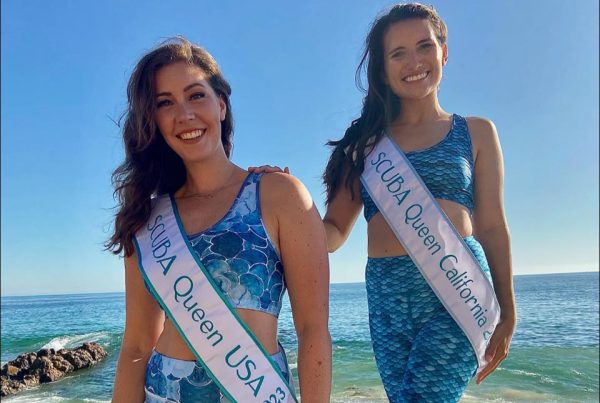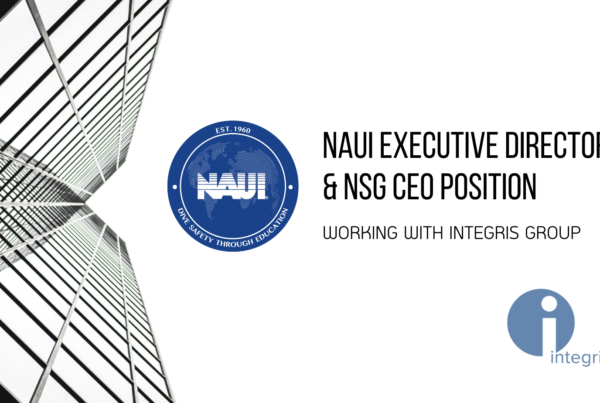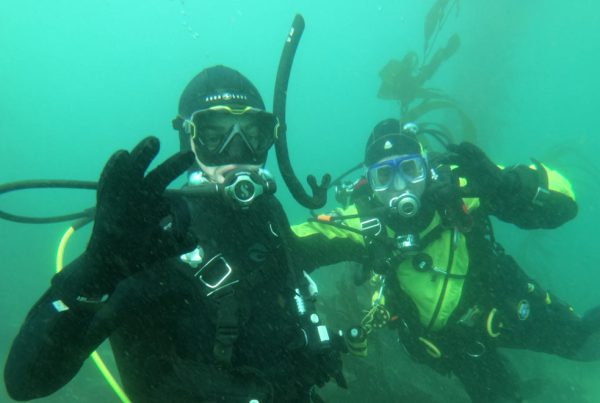Very few people know it, but Santa Barbara, California is recognized by most international diving historians as the birthplace of deepwater diving technology. Another surprising fact is that the innovators weren’t scientists or military experts, but rather a group of Santa Barbara’s abalone divers.
2022 marks the 60th anniversary of the 400-foot pioneering mixed gas dive by Hugh “Dan” Wilson, a former abalone diver, that sparked the deepwater diving revolution. He wasn’t necessarily making the epic dive for fame and glory; Wilson and his team of pioneering dive buddies were interested in finding ways to dive deeper, and safer.
As we sport divers learn during entry-level scuba training, breathing compressed air at deep depths is dangerous. Divers venturing deeper than about 80 feet while breathing compressed air are at risk of experiencing nitrogen narcosis, which causes impaired thinking and changes in consciousness and neuromuscular function. Below about 185 feet, the partial pressure of oxygen in a standard scuba cylinder becomes toxic, causing convulsions that would almost certainly prove fatal to a diver at that depth due to loss of consciousness that would cause drowning.
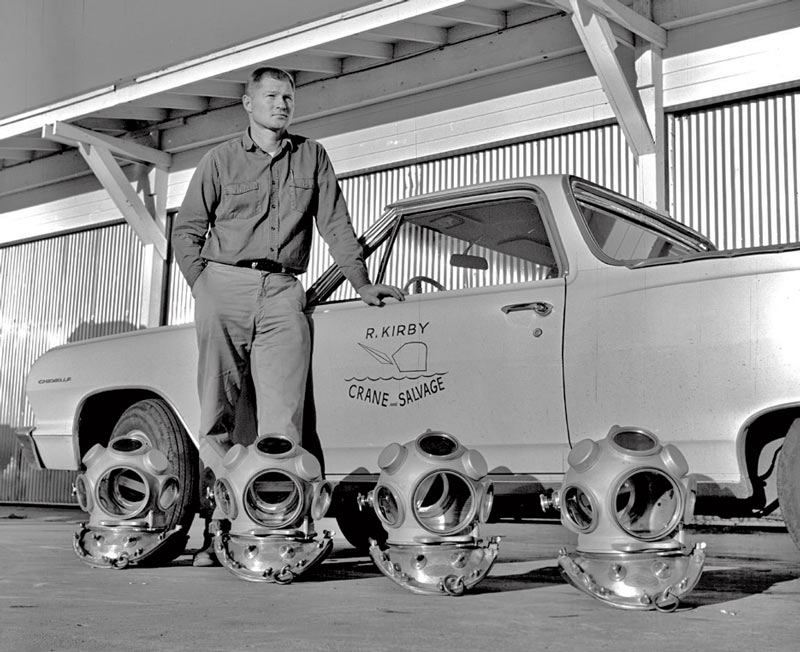
Pioneering Diver Bob Kirby posing with his helium recirculator helmets at Santa Barbara Airport.
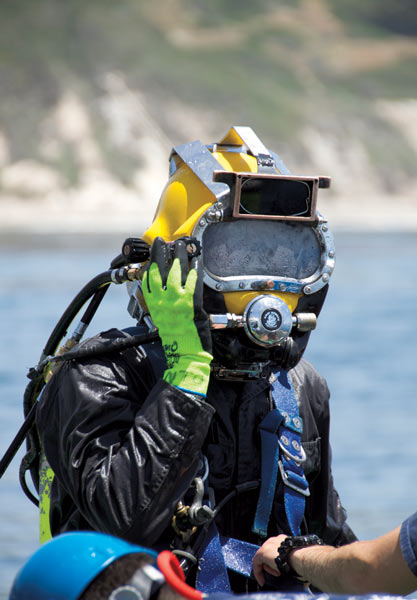
Modern day Kirby-Morgan Superlite® lightweight fiberglass helmet in use off Santa Barbara.
Mixing It Up in the Deep
Wilson cast off from Santa Barbara harbor for his historic dive in relative secrecy on the fishing vessel Rio Janeiro on November 3, 1962. With him was a support crew of abalone divers and some students from Brooks Institute of Photography, who documented his successful record attempt while also doubling as his safety divers on the risky experimental dive.
Wilson safely completed a dive to a depth exceeding 400 feet off the east end of Santa Cruz Island, in the Santa Barbara Channel. To survive at this extreme depth, Wilson used a gas mixture of helium and oxygen, now widely used by commercial and technical divers. Known as Heliox, the gas blend is non-narcotic at depth.
The local newspaper, The Santa Barbara News Press broke the story to the public two days later.
Wilson’s historic dive was the catalyst that created what is known as “The Santa Barbara Helium Rush.” It spawned the development of equipment, technology, support, and training infrastructures that rapidly spread worldwide and revolutionized the trade of both the commercial and military diver. The technology developed in Santa Barbara became the norm for diving operations in the North Sea, the Middle East, Far East, Gulf of Mexico, Venezuela and beyond. It remains in use in commercial and sport/technical diving operations today.
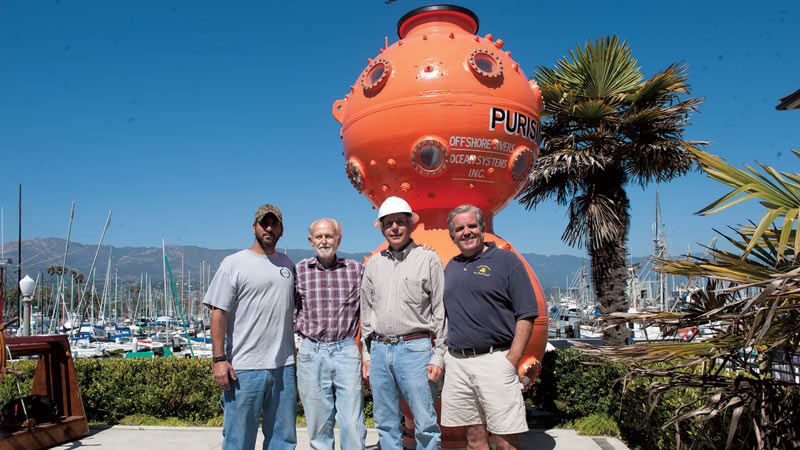
Restored Purisima Diving Bell returns home in-front of Santa Barbara Maritime Museum in 2011. L-R SBCC student diver Omer Sfar, Purisima Diver Bob Christensen, Seth Hammond (Owner Specialty Crane, BCC Professor Don Barthelmess).
Ringing the Helium Bell
Throughout the 1960s and ‘70s, the commercial diving industry saw big changes in equipment that had previously remained unchanged for many, many years. Traditional copper and brass heavy-gear helmets for surface gas dives were being replaced by modern lightweight headgear, with divers being deployed from closed diving bells.
In the mid-1960s in Santa Barbara, Bev Morgan and Bob Kirby formed Kirby Morgan Dive Systems® and designed the mixed gas diving helmets and systems which have become the international standard for military and deepwater divers worldwide.
Since 1964, well over 90 percent of the deepwater diving helmets used by working divers worldwide are made in Santa Barbara. In 1968, Santa Barbara City College developed the only community college program in the United States to train Marine Technicians and divers to support this global industry.
California became the international hub for companies using mixed gas helium diving technology, including DIVCON and California Divers (Cal Dive). Cal Dive used Santa Barbara harbor and Stearn’s Wharf as their base for many years. The world’s largest publicly traded dive company, Oceaneering International, had its corporate headquarters on Cota Street in the 1970s.
Cal Dive and Oceaneering are still trading today on the New York Stock Exchange.
Wilson’s General Offshore Divers company built and launched the world’s first commercial lockout bell “Purisima” in Santa Barbara in 1964.
While the concept of Purisima was advantageous, its initial use revealed several flaws and challenges that needed to be addressed. The bell’s instability in the water column required the addition of a third sphere for buoyancy to keep it vertical. This made launch and recovery difficult in most sea conditions. [Editor’s note: The Purisima Bell has been restored and can be seen today outside the Santa Barbara Maritime Museum.]
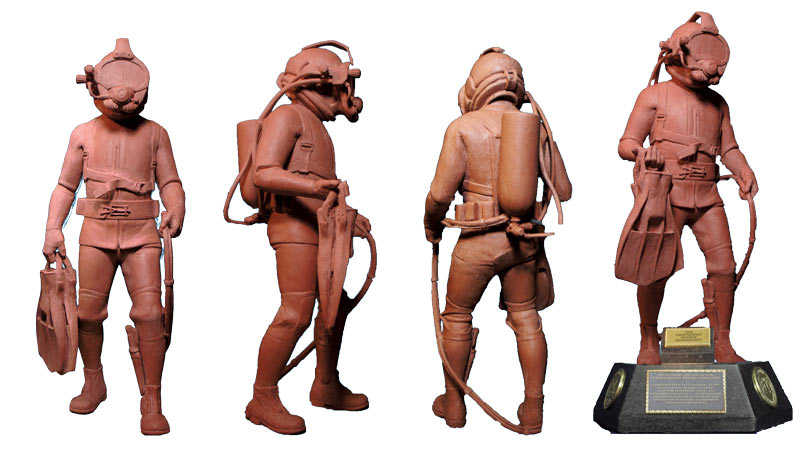
Preliminary clay model of the Deepwater Diving Monument.
A Monumental Tribute
California’s rich deepwater diving history is undoubtedly worthy of recognition. Former Historical Diving Society Presidents Leslie Leaney and Don Barthelmess are currently heading up a team that plans to erect a 10-foot tall bronze monument of a diver in a Superlite helmet, to honor the divers and innovators who made Santa Barbara, California, the Home of Deepwater Mixed Gas Diving. The project and its location have been approved by the Waterfront Department at Santa Barbara harbor, and various other local government departments.
Greg Gorga, Executive Director of the Santa Barbara Maritime Museum, says, “Deepwater commercial diving began right here in Santa Barbara, and this monument helps honor and celebrate the divers who took mankind to deeper and deeper depths. Their hard work and innovations benefitted all of us, especially the Santa Barbara community.”
Diving history buffs are probably aware of the Mark V Monument project, which saw an 8-foot tall bronze statue of a US Military diver in a US Navy Mark V helmet and gear, erected at the US Navy Diving and Salvage Training Center in Panama City, Florida. The new California initiative will be carried out by the same company who built the Mark V Monument. The Monument, which has been commissioned by sculptor Greg Pulatanovich, has garnered the endorsement of Kirby Morgan President Connie Morgan. It will be a gift to the City of Santa Barbara from Leslie and Don’s team, on behalf of the professional and military divers of the world.
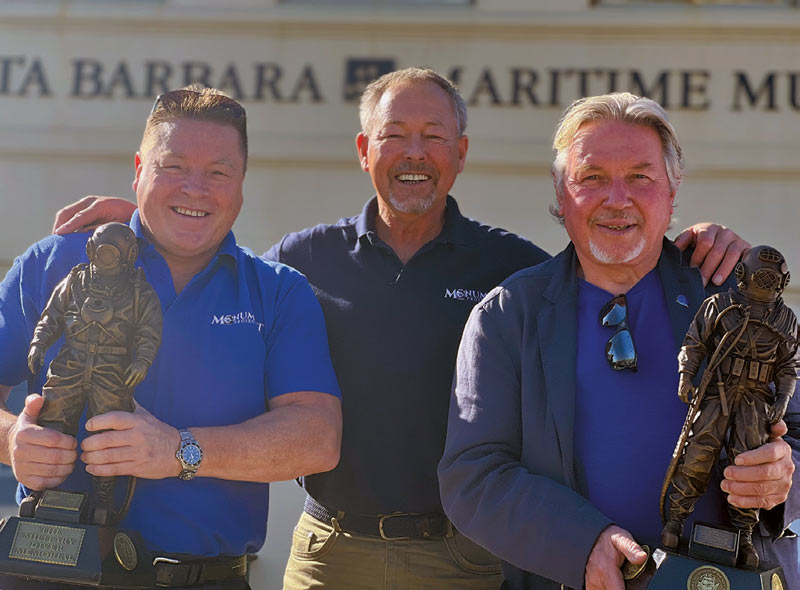
Project personnel: Tony Sexton, Paul Guiver (Monument Projects Ltd) and Leslie Leaney (Historical Diving Society) pose with fine art bronze statuettes at Santa Barbara Maritime Museum (Don Barthelmess not pictured).







